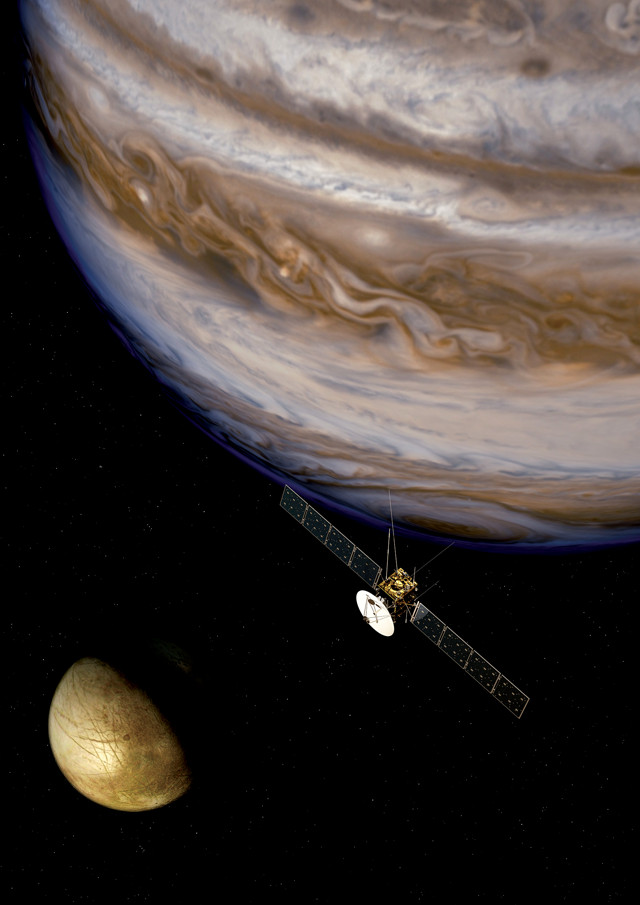
by Lucas Joel Tuesday, October 18, 2016

The JUICE spacecraft, scheduled to launch for Jupiter in 2022, will study dust emitted from moons orbiting the gas giant. Credit: ESA/AOES.
Periodically, micrometeoroids strike one of the four Galilean moons of Jupiter — Io, Europa, Ganymede and Callisto — sending dust into space, some of which enters into orbit around the gas giant. Recently, researchers charting the dusts’ orbits spotted some peculiar patterns, including some particles orbiting Jupiter in a retrograde fashion, by circling, when viewed from above, clockwise rather than counterclockwise.
Such an orbital direction is rare in the solar system. “We have hints of this at Saturn, but because retrograde is a bit like driving the wrong way on the highway, the relative lifetime of these particles is quite small,” said Nicolas Altobelli, a European Space Agency (ESA) planetary scientist not involved in the new Journal of Geophysical Research: Planets study, in an American Geophysical Union (AGU) blog post. The orbiting dust also appears to be sorted by grain size: Larger grains aggregate on the dark side of Jupiter, while smaller grains gather toward the side facing the sun.
Understanding how, exactly, dust orbits Jupiter has practical applications: Come 2022, ESA will launch the JUpiter ICy moons Explorer (JUICE) spacecraft, whose mission includes studying the composition of dust orbiting the planet, including dust from Europa, which has an ocean potentially capable of harboring life. Charting Jupiter’s dust will not only allow scientists to know which moon the orbiting particles originated from, but will also help keep JUICE out of harm’s way. “For a spacecraft, one single grain one-tenth [of a] millimeter in size could be fatal if it hits the right part,” Juergen Schmidt, an astrophysicist at the University of Oulu in Finland and a co-author of the new study, told AGU.
© 2008-2021. All rights reserved. Any copying, redistribution or retransmission of any of the contents of this service without the expressed written permission of the American Geosciences Institute is expressly prohibited. Click here for all copyright requests.